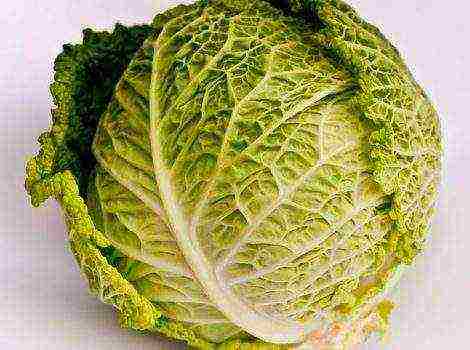Content [show]
What to do if zucchini seedlings are stretched
Zucchini seeds came to Europe from the subtropics of Latin America. Italian cuisine was the first to turn to overseas curiosity. Unripe fruits are not only tasty. Supporters of healthy eating have appreciated the low-calorie, rich in dietary fiber and micronutrients zucchini. A healthy vegetable is quite unpretentious. The main problem is that at a temperature of +14 degrees, the growth of the bush stops. In less than 3 months of summer, the plant will not have time to form a healthy bush and give a full harvest. There is only one way out - to grow zucchini through seedlings, but it can stretch out, and you need to know what to do.
Temperature below +5 degrees for a plant is destructive... Growing zucchini in the open field in our climate is possible only from the first days of June, when the threat of return frosts has passed. And at the end of August, even in the middle lane and the Moscow region, night temperatures are possible slightly above 0.
The main reasons why zucchini seedlings can stretch out
Summer residents can't wait to get an early harvest. As a result, inexperienced gardeners get additional problems instead of early vegetables. Pale, elongated seedlings are the result of starting the crop too early. Weak seedlings appear as a result of repeating the traditional mistakes of novice gardeners.
Sowing seeds too early
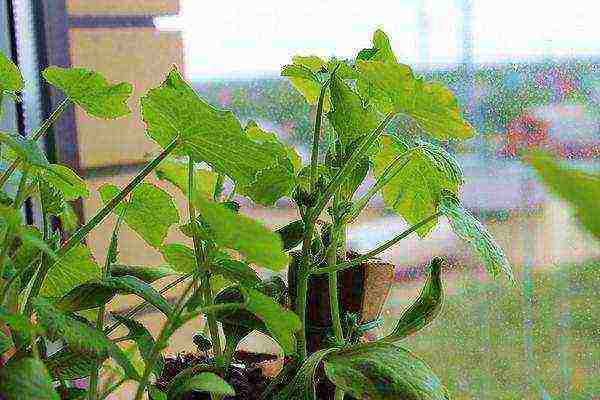
For a young plant, sunlight is as important as water and root nutrition. If the seeds are planted too early, the seedlings must be artificially illuminated.
Sowing seeds too early has another consequence for the summer resident - in the phase 3-4 true sheets the seedling should be identified to a permanent place... If there is a greenhouse, it is necessary to plant according to all the rules.
It is categorically contraindicated to plant melons in open ground until the average daily temperature is above + 12-14 degrees.
Poor choice of growing location
Inexperienced summer residents sometimes do not measure the possible with the desired. As a result, seedling boxes are placed in not the most suitable places.
Lack of nutrients
Quite a rare situation, since it is the soil for seedlings that gardeners harvest with special care. It happens that zucchini seeds are used for planting completely unsuitable for melons purchased ready-made substrate.

Useful recommendation
It is not at all difficult to calculate the time for planting zucchini seeds. For example, you are going to plant seedlings in a permanent place in the garden June 1st... It takes 30 days to grow seedlings: 5 days for germination and 25 until 3-4 true leaves appear. Conclusion - you embed the seeds in the soil for May holidays.
Is it possible to plant overgrown seedlings
You should not be too worried if the seedlings are stretched out from lack of light or outgrown due to too early planting of seeds.All melons and gourds, including zucchini, have a wonderful property - rapid formation of additional roots on the stem.
What to do if the seedlings are overgrown
Heat-loving zucchini practically stops in development at temperatures of + 14-17 degrees.
If you live in a private house, the seedlings should be placed on an unheated veranda (watch the temperature - place a thermometer nearby). City dwellers can place boxes of overgrown seedlings on the glassed-in balcony.
Preparing for transplant
If the boxes were kept in a cool place to slow down the growth of seedlings, the seedlings underwent a good restorative hardening. In a similar way, it is necessary to prepare for life in the open air and non-overgrown seedlings with 3-4 leaves.
In addition to hardening the seedlings, it will be useful to obtain a complex root feeding. About 1 week before planting the seedlings in a permanent place, the zucchini should be watered with a solution nitrogen fertilizers.
If possible, use organic matter - feed the sprouts fermented infusion of mulleindiluted at least 1:10.
It is much easier to use standard ready-made mixtures such as "Master" or "Kemira"... The industry produces water-soluble fertilizers balanced in terms of elemental composition. It is very easy to prepare a working solution - 5 grams (1 teaspoon) of fertilizer from a bag dissolves easily in 2 liters of water.

For an even distribution of liquid fertilizer, it is necessary to irrigate directly before and immediately after feeding.
Deepening overgrown plants
Pumpkin plants, including zucchini, quickly form adventitious roots at the point of contact of the stem with the ground. These roots develop from miniature villi on the stalk of the squash and after 1-2 weeks the stunted, elongated sprout can overtake its neighbors in growth strength.
The deepening of an overgrown plant is carried out within reasonable limits - it is quite enough up to 1 sheet.
A little about the intricacies of transplanting zucchini:
- Best used for growing seedlings peat pots... Without the slightest stress for the plant, plant a bush with the pot to the desired depth.
- Grown in a common planting box, squash seedlings need transplant with a clod of earth... The larger this lump is, the more successful the recovery process after the "operation" will be. Small suction roots are damaged in any case - the plant will “hurt” until they are fully restored. Watering before transplanting should be done the day before. The plant should be saturated with water, and a clod of earth should acquire a crumbly structure.
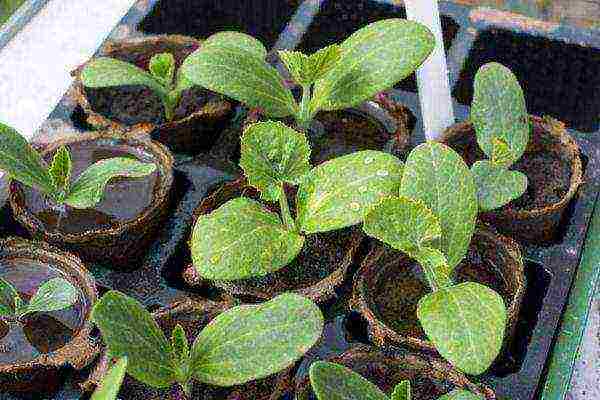
Landing in the holes
We have already found out that the seedlings will have to be buried no more than 5-7 cm... With approximately this calculation, the holes should also be prepared.
Zucchini is a vigorous vegetable crop with a very powerful bush. When planting by the nesting method, the distance between the holes should be about 1 m... Your zucchini have already suffered from a lack of sunlight once - let them grow normally in the garden.
If the garden bed is prepared in advance (from autumn) according to all the rules, you can plant zucchini without additional feeding. In an area with depleted soil, you will have to add top dressing to each hole.
- Supporters of organic farming for a hole for 2-3 seedlings, planted at a distance of 20-30 cm (triangle), use 1-2 buckets as top dressing compost or rotted manure and 1-2 glasses wood ash... Everything is mixed well and only then the seedlings are planted.
- Weekend summer residents, city dwellers, prefer to use factory-made chemical fertilizers. The method of application is indicated on the package and must be strictly observed in order not to get a product that is dangerous to health, stuffed with nitrates.
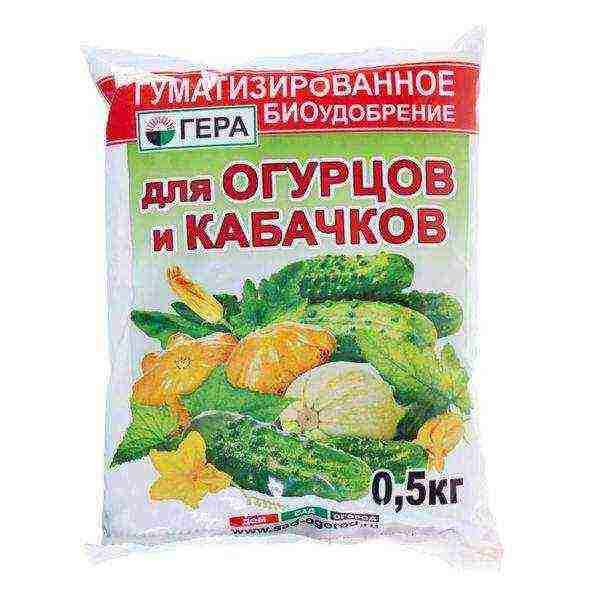
It is most convenient to use complex dressings of the ready-made composition such as “Kemira” or “Master” using the method of preparation of the working solution indicated on the package. Only for open ground, the solution will require much more. For 1 well, give approximately 1 liter of solution.
It is undesirable to cook it for the future, however, any tree or bush in the garden can be fed unused. 10 liters of water (1 bucket) requires 20-25 g of fertilizer.
As already noted, before feeding and immediately after it is required to water... This contributes to an even distribution of fertilizer in the soil.
Post-plant care
Correctly planted seedlings take root quickly and start growing in a week. What needs to be done for successful acclimatization of zucchini in the garden.
- The first 2-3 days are desirable shade landing... Agrofibre is best suited for this purpose. The fabric stretched on arcs can not be removed all season - it will reliably protect the plants from the burning sun and possible nighttime cold snaps.
- The simplest method is to protect the seedlings from the sun with green branches, in moist soil the branches will hold out in a “live” state for just those 2-3 days that so affect the process of seedling survival.
- Watering should be done 2-3 times a week at least 10 liters (1 bucket) per well.
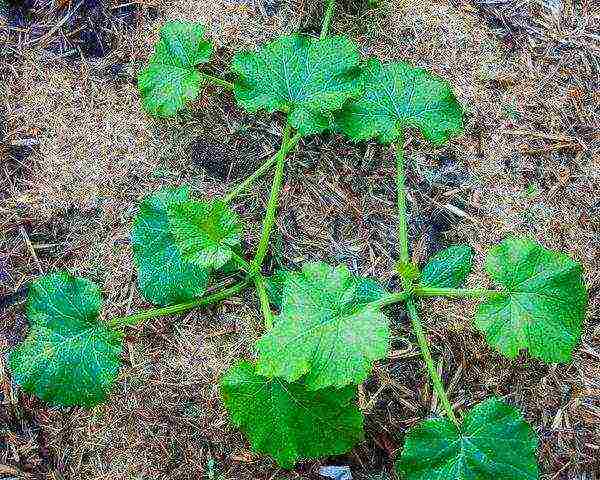
Loosening after watering, which is so popular among summer residents, is much more effective to replace mulching holes... The hole itself is filled with a layer of mulch of at least 5 cm - straw, old sawdust, husks, crushed bark, etc. The result is that you can water less often (convenient for townspeople), there are no weeds.
You should not despair if the seedlings have outgrown - a few simple tricks will make the zucchini bush even stronger:
- hardening with cool air of a veranda or balcony;
- buried planting in nutritious soil;
- optimal lighting conditions;
- competent watering;
- mulching.
Mistakes are valuable because they teach you to find a solution and not repeat them in the future.
